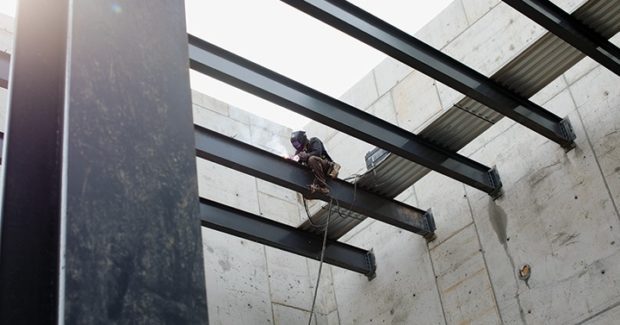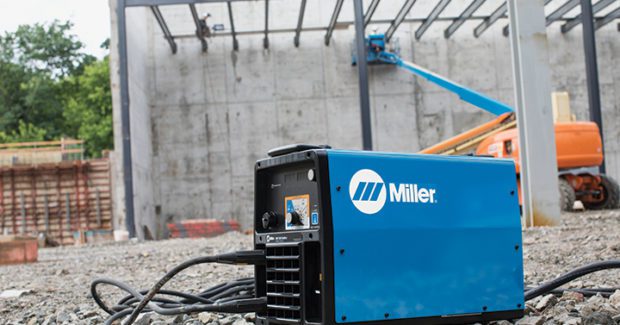Welding Game Changers for Productivity and Efficiency
Is the jobsite challenging your older equipment and costing you time and money? By switching to some of the new time-saving systems that are now available, you can save money while also improving your productivity, quality and jobsite safety.
Posted: September 6, 2017
Think about the many challenges on the jobsite that cost you time and money: Inefficiencies and practices that result in low productivity. Equipment that doesn’t allow operators to easily make weld parameter adjustments, which can result in poor weld quality. Increased risk of slips, trips and falls that can injure welding operators. Equipment downtime and repairs that reduce productivity and profit. Machines that use old technology and waste your equipment budget. You can remedy these problems by investing in new innovations and technologies that provide greater ease of use and efficiency. Utilizing systems that save time and make it easier for less experienced welding operators to produce high quality welds is important for most every welding operation as shops look for ways to stay competitive.
If a welding operator walks four times per day to the power source for parameter changes, and each walk takes an average of 15 minutes, this wastes 250 hours per year for every welding operator on the jobsite and costs your operation an average of $11,250 per operator annually. Remote control welding technology lets welding operators easily adjust welding parameters at the weld joint so that they can maximize productivity by minimizing the downtime spent walking to the welding power source to make adjustments. This saves time and money, improves operator safety, and provides greater control of welding parameters for improved quality.
AUTOMATIC VOLTAGE ADJUSTMENT
One option that provides productivity and efficiency benefits is remote control welding technology. For example, ArcReach® technology provides complete control of welding parameters at the weld joint using a remote or wire feeder – without the need for a control cord – even hundreds of feet from the power source. While remote control technology has been available for some time, several new capabilities in remote control welding systems are now available that can deliver even more time-saving, safety and quality benefits. One new technology that can be used with updated ArcReach systems makes proper setup of welding parameters faster and easier by automatically adjusting to compensate for the voltage drop in weld cables. Cable Length Compensation (CLC™) ensures that the voltage a welding operator sets is the voltage they get, even up to hundreds of feet away from the welding power source.
With traditional machines, the welding operator must manually adjust for the voltage drop that occurs with the resistance in weld cables by setting the voltage higher than necessary at the power source (load voltage) to ensure that they get the voltage they want at the arc (arc voltage). This process is often a guessing game, requiring the operator to set a certain voltage, weld for a bit, then either radio another worker on the site or return to the welding power source to adjust voltage again before walking back to continue welding. This back and forth may happen several times before the operator dials in the right level to compensate for the voltage loss that occurs in the secondary weld cable circuit, a loss that varies based on cable length, connection quality, cable conditions and setup.
CLC technology automatically compensates for this voltage drop in the welding circuit, providing greater accuracy and easier control of weld quality for the operator. It also saves significant time that the operator would spend walking back and forth to the power source to dial in the voltage to meet welding specifications.
GREATER CONTROL, EVEN WHILE WELDING
Another new technology allows for parameter changes while the arc is on and the weld is being laid. With Adjust While Welding (AWW™) technology, precise adjustments and parameter changes can be made at the wire feeder or remote control – even while the arc is on – so operators can compensate for heat buildup, changes in weld position or variations in part fit-up while they are welding.
In pipeline or process pipe applications, for example, an operator may want to tweak welding parameters as they progress around the pipe. In infrastructure applications, the operator may want to change parameters during welding to adjust to less-than-ideal part fit-up. With this technology, these changes can be made without breaking the arc. The operator can signal to another worker to adjust voltage, amperage or wire feed speed to make these needed adjustments on the fly. This saves time and contributes to improved weld quality, since each stop and start of the arc introduces the potential for discontinuities or quality issues that often require time-consuming grinding between passes.
In most welding systems with remote control welding technology, making adjustments at the weld joint typically requires a control cable that provides the welding power source the necessary information to change its output. But ArcReach technology only requires the welding cables for both weld power and communication between the welding power supply and the wire feeder or remote, eliminating the control cable to power and control the accessory.
These two new technologies are only available when both the power source and the accessory are equipped with enhanced ArcReach technology, such as the system available in the new XMT® 350 FieldPro™ welding system. In addition, the new XMT 350 FieldPro with Polarity Reversing model (which is coming soon) will automatically select the proper polarity based on the welding process chosen by the operator. This eliminates the need to chase down which cable is connected to what DC terminal, saving even more time in setup.
INNOVATIONS DESIGNED TO MAXIMIZE PRODUCTIVITY AND CONTROL
Investing in new welding innovations and adopting remote control technology can potentially save hours every day for a substantial impact on the bottom line. When operators have complete control right at the spot of their work – even up to hundreds of feet away from the welding power source – it minimizes downtime and maximizes productivity while also improving operator safety and contributing to the high weld quality that fabricators need to remain competitive. And new systems are available that provide even more efficiencies, allowing parameter adjustments without stopping the arc in addition to automatic adjustments of voltage to compensate for the voltage drop in weld cables.
Your current equipment may be costing you time and money. Switching to new time-saving systems can save you money while also improving your productivity, quality and jobsite safety.







